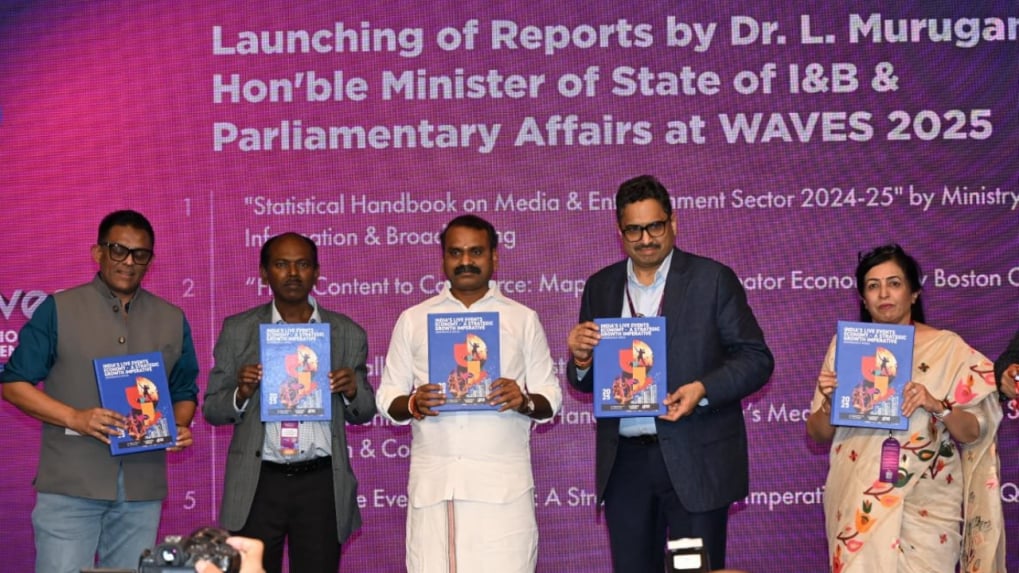WAVES 2025: DD free dish expands to 381 channels, AIR reaches 98% masses, reveals MIB Statistical Handbook
Doordarshan Free Dish expanded from 33 channels in 2004 to 381 in 2025, while Direct-to-Home (DTH) services now cover 100% of India geographically. All India Radio (AIR) stations increased from 198 in 2000 to 591 in 2025, extending AIR’s reach to 98% of the Indian population.
ADVERTISEMENT
Union Minister of State for Information & Broadcasting and Parliamentary Affairs, Dr. L. Murugan, unveiled the Statistical Handbook on Media & Entertainment 2024–25 at the WAVE Summit in Mumbai on Saturday, May 3, 2025.
The report shows a significant rise in the number of registered publications with the Press Registrar General of India (PRGI), from 5,932 in 1957 to 154,523 in 2024–25, reflecting a CAGR of 4.99%. The Publications Division also published 130 books in the same period on diverse themes ranging from children’s literature to science and biographies.
In broadcast media, Doordarshan Free Dish expanded from 33 channels in 2004 to 381 in 2025, while Direct-to-Home (DTH) services now cover 100% of India geographically. All India Radio (AIR) stations increased from 198 in 2000 to 591 in 2025, extending AIR’s reach to 98% of the Indian population.
Additionally, the number of private satellite TV channels grew from 130 in 2004–05 to 908 in 2024–25. Private FM radio stations expanded from just 4 in 2001 to 388 in 2024. Community Radio Stations (CRS), which play a vital role in grassroots communication, also saw significant growth, from 15 in 2005 to 531 in 2025.
The report further highlights developments in the Indian film sector. The number of Indian feature films certified grew from 741 in 1983 to 3,455 in 2024–25, with a cumulative total of 69,113 films certified. It includes updated data on awards, international film festivals, and documentary films produced by the National Film Development Corporation (NFDC).
Digital media achievements are also featured prominently. The handbook covers initiatives such as WAVES OTT, the Indian Institute of Creative Technologies (IICT), and the Create in India Challenge (CIC), all aimed at fostering innovation in the digital and creator economy.
The report includes a detailed chronology of landmark moments in Indian broadcasting history, such as the establishment of Akashvani, Doordarshan, INSAT-based TV services and the rise of private FM radio. It also documents skilling and capacity-building efforts under the Ministry’s training programmes, along with reforms aimed at improving the ease of doing business for media and content creators.
Prepared by the Ministry of Information & Broadcasting, the Statistical Handbook is designed to serve as a cornerstone for data-driven policy formulation and strategic planning. This statistical compendium is expected to be a crucial reference for policymakers, industry stakeholders, academics and investors looking to navigate and contribute to India’s dynamic media and entertainment ecosystem.
Also Read: WAVES 2025: India’s M&E sector set to add Rs 1.7 lakh crore; 3,00,000 jobs by 2029


